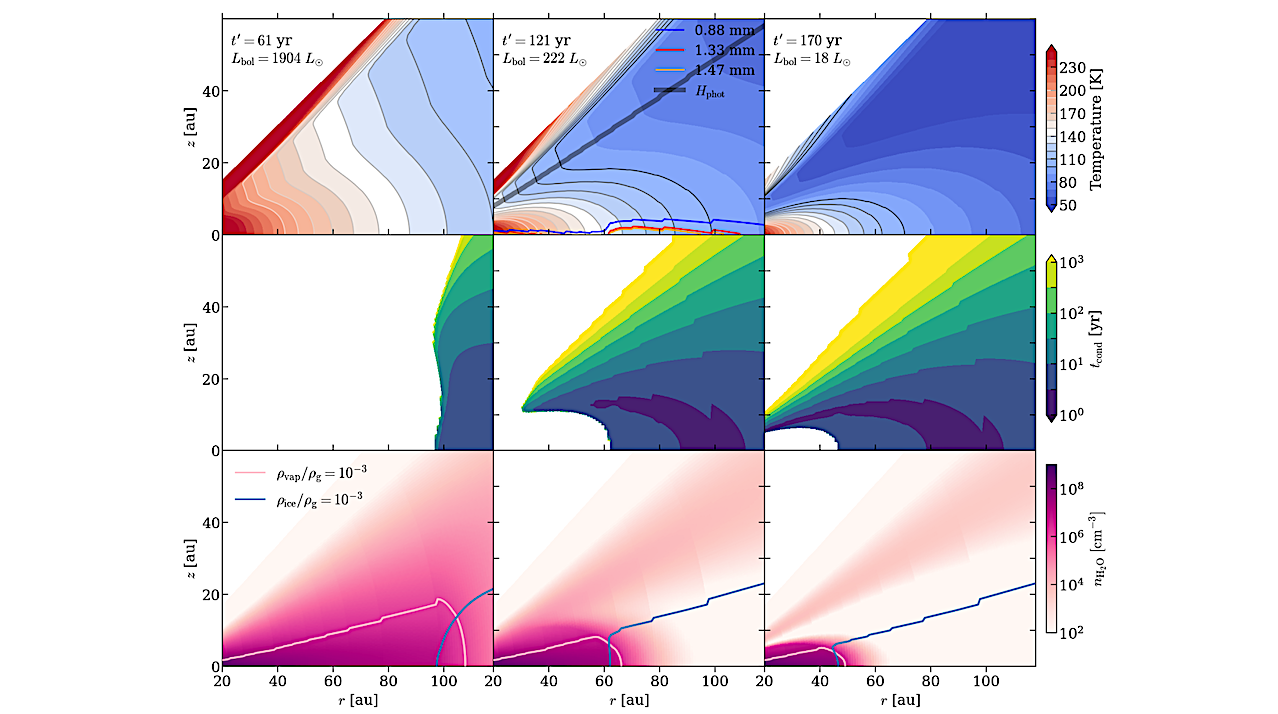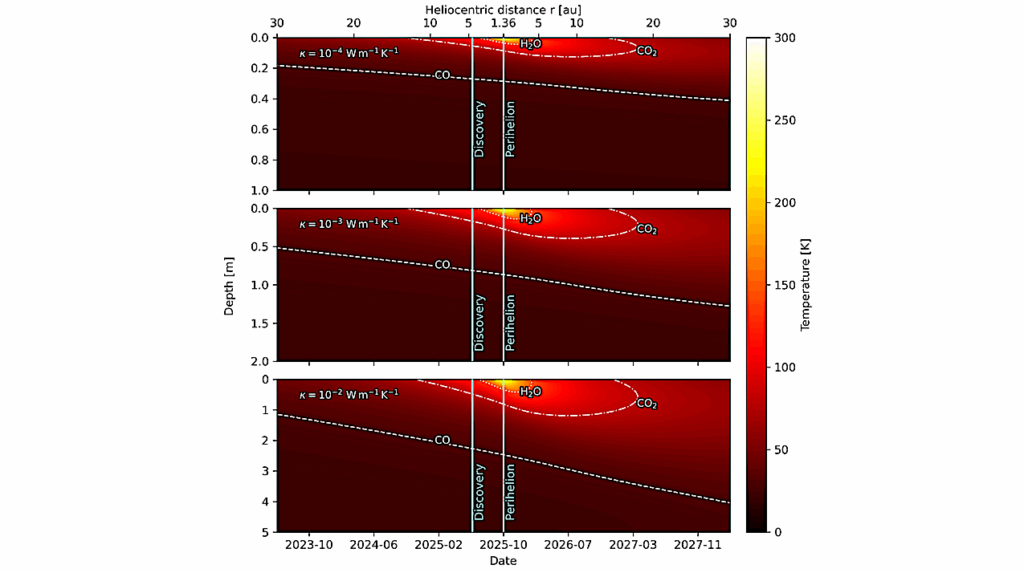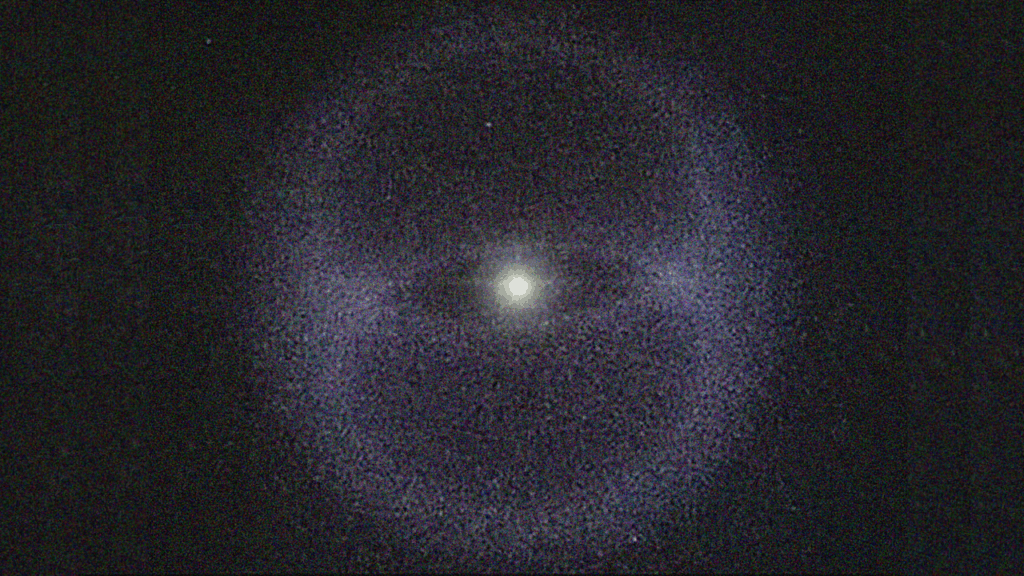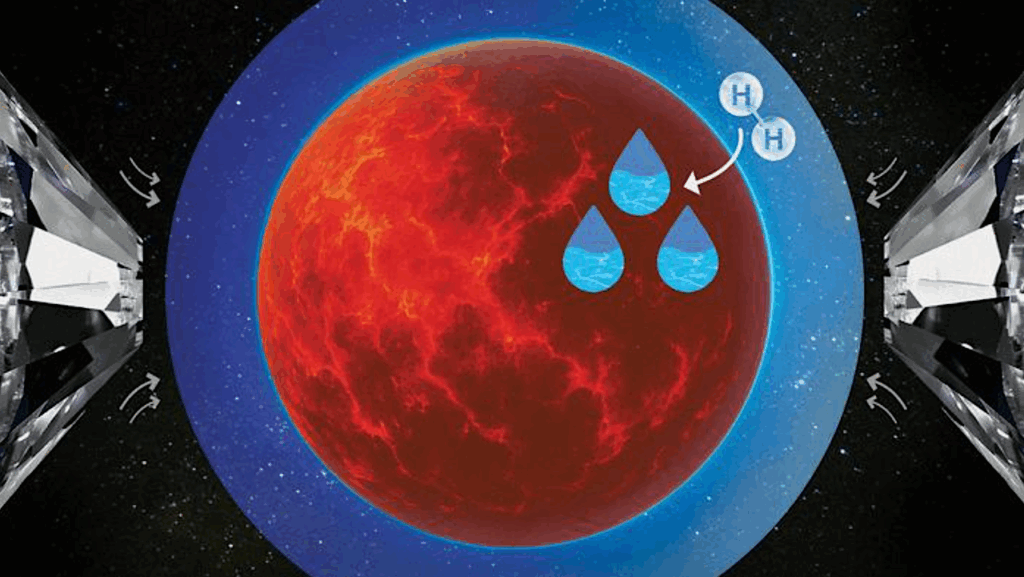Dust And Water In V883 Ori: Relics Of A Retreating Snowline

V883 Ori is an FU-Orionis-type outburst system characterized by a shoulder at 50-70 au in its ALMA band 6 and 7 intensity profiles.
Previously, this feature was attributed to dust pile-up from pebble disintegration at the water snowline. However, recent multi-wavelength observations show continuity in the spectral index across the expected snowline region, disfavoring abrupt changes in grain properties.
Moreover, extended water emission is detected beyond 80 au, pointing to a snowline further out. This Letter aims to explain both features with a model in which the snowline is receding. We construct a 2D disk model that solves the cooling and subsequent vapor recondensation during the post-outburst dimming phase.
Our results show that both the intensity shoulder and the extended water emission are natural relics of a retreating snowline: the shoulder arises from excess surface density generated by vapor recondensation at the moving condensation front, while the outer water vapor reservoir persists due to the long recondensation timescales of 102−103 yr at the disk atmosphere.
As V883 Ori continues to fade, we predict that the intensity shoulder will migrate inward by an observationally significant amount of 10 au over about 25 years.
Yu Wang, Chris W. Ormel, Hao-Chang Jiang, Sebastiaan Krijt, Adrien Houge, Enrique Macías
Comments: Accepted for publication in A&A Letter
Subjects: Earth and Planetary Astrophysics (astro-ph.EP)
Cite as: arXiv:2510.27468 [astro-ph.EP] (or arXiv:2510.27468v1 [astro-ph.EP] for this version)
https://doi.org/10.48550/arXiv.2510.27468
Focus to learn more
Submission history
From: Yu Wang
[v1] Fri, 31 Oct 2025 13:38:01 UTC (1,412 KB)
https://arxiv.org/abs/2510.27468
Astrobiology, Astrochemistry








